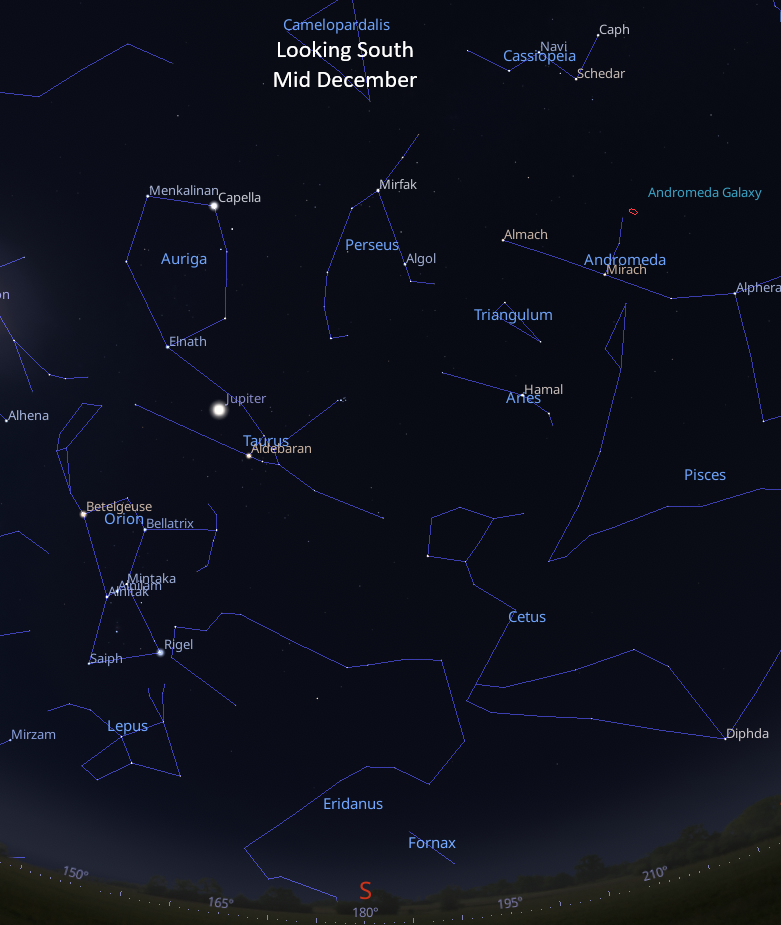Dark Sky Advisor, Steve Tonkin, guides you through the December sky.
Jupiter, the King of Planets, dominates the southern night sky. It is near opposition (the opposite side of Earth from the Sun) so is about as bright as it gets. If you have binoculars or a telescope, see if you can spot, close to the planet, any of the four pin-point moons that Galileo discovered.
About a hand-span above Jupiter is bright Capella, the most luminous star in the constellation Auriga, the Charioteer. The same distance to the right is a group of stars, surrounding Mirfak, known as the Alpha Perseii Moving Cluster, which is obvious to the naked eye but utterly stunning in binoculars. It is called ‘moving’ because the entire group is moving together through space (but you won’t be able to detect this even over a human lifetime).
Up to the right is the distinctive W shape of Cassiopeia. In mythology, she was the boastful Queen of Ethiopia who declared that her daughter was more beautiful than the Nereids, nymphs sacred to Poseidon. The left had three stars of the W form an arrowhead that points to yellowish Mirach, the brightest star in Andromeda.
Just above Mirach is a fainter white star, then the same distance further on (red on the chart) is a fuzzy patch, which is easy to see with binoculars, but should be visible to your unaided eye in the dark skies of this National Landscape. This fossil light from the Andromeda Galaxy has taken nearly 2.5 million years to reach us; let’s make sure we don’t obliterate it in the last fraction of a second of its journey!
Find out more about Cranborne Chase International Dark Sky Reserve.

